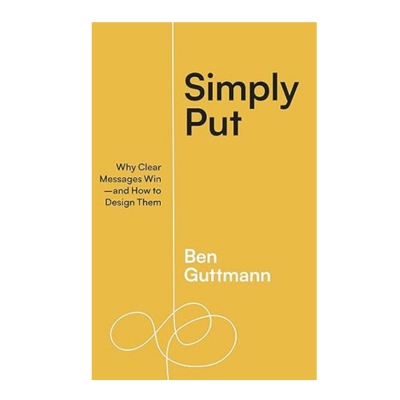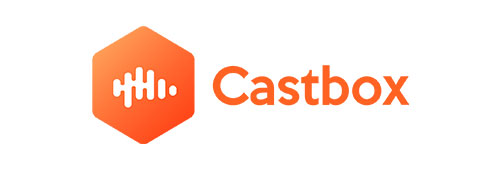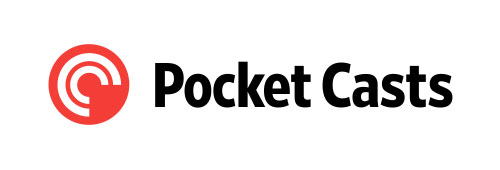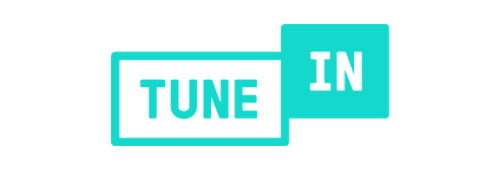 Welcome to another episode of Inside Personal Growth! We’re joined here today by marketing entrepreneur, educator and bestselling author Ben Guttmann featuring his new book Simply Put: Why Clear Messages Win―and How to Design Them.
Welcome to another episode of Inside Personal Growth! We’re joined here today by marketing entrepreneur, educator and bestselling author Ben Guttmann featuring his new book Simply Put: Why Clear Messages Win―and How to Design Them.
Ben is an entrepreneur, educator, and advisor who has been trusted to help tell the story of global brands including the NFL, I Love NY, and Comcast NBCUniversal. For ten years before its acquisition, he ran Digital Natives Group, an award-winning marketing agency that partnered with brands including The Nature Conservancy, Grand Central Terminal, and SwissRe, as well as luminaries including Nobel laureates, Fortune 500 CEOs.
Since 2014, Ben has taught marketing at Baruch College, the largest business school in the nation, proudly helping more than a thousand aspiring marketing professionals launch their careers – and even launch some of their own businesses.
Presently, he’s focused on interrogating new ideas related to this work, advising a set number of fun clients, and exploring ventures that blend rapidly-innovating technology with our fundamental, unchanged humanity. Last October 2023, Ben released his book Simply Put: Why Clear Messages Win―and How to Design Them. Here, Ben unveils a five-part framework that allows anybody to communicate with clarity. With this book, you’ll be able to design messages that are beneficial, focused, salient, empathetic, and minimal – and that work.
Learn more about Ben and his works by visiting his website here.
Thanks and happy listening!
You may also refer to the transcripts below for the full transciption (not edited) of the interview.
Greg Voisen
Well, welcome back to Inside Personal Growth. Ben, all these listeners know me. They've heard me for years and years, 17 years now and almost 1100 podcasts. So I think they got it. Joining us from New York is Ben Guttmann. And Ben has a book out called Simply Put: Why Clear Messages Win - and How to Design Them. And the book is great, because all you got to do is dig into this. And you're gonna see that most of us try and overkill our messaging. And I told Ben, as we came into this, if there's one thing that I my list I like to get out of it is how simple less is more. Hey, Ben, how are you doing today?
Ben Guttmann
Great to be here, Greg. I appreciate it. Thanks for the kind words about the book.
Greg Voisen
Oh, it's a great book. And in reality, your message is so important for people to hear about and to let them know a little bit about you. He says he's interested in things and ideas that move people, obviously. Why do we make the decisions we make? How do we vote for who we vote for? Why do we buy the products we buy? And ultimately, why do we do what we do? That's the psychology of marketing and messaging. We're not as smart as we think we are a says we're busy and distracted in a distracted world that's incentivized to continually make us more of both. The only thing that works, the only messages that cut through the noise are the sharp, clear and direct messages. Right now, he has his new book out which I just held up, which is a Berrett Koehler book, simply put, for a long time he owned a company called Digital Natives group and award-winning marketing agency based in New York. I started out working with local ice cream parlor and camera shop repair, and grew this company to partnering with the NFL, I love New York, Comcast, NBC Universal, The Nature Conservancy, and other incredible brands so he really congratulations to you Ben for building a very huge digital company. And through his publishing practice, he helped launched over 60 bestselling books from hash a book group, Penguin, Random House, Simon Schuster, and other important imprints including from Nobel laureates, fortune 500, CEOs, Hollywood screenwriters, and Pulitzer Prize winners with more than 60 industry awards including prestigious webby and short bonds and all any sold digital natives in 2021. And since then, he's been out on his own. And he's got a website that you all can go to which is www.benguttmann, g-u-t-t-m-a-n-n, two ends on the end of that mann.com. There, you're going to learn more about him, his book, his consulting, his speaking, and the resources that he has there for you. So, Ben, welcome to the show.
Ben Guttmann
Oh, thanks for having me, Greg. Yeah, that's a wonderful and very in-depth introduction.
Greg Voisen
Well, sometimes they are and sometimes that good. And if I get the listeners to lift past the introduction, they usually then listen to the rest of the podcast. So, you mentioned in the preface of your book that it turns out that simple isn't so simple. And it sure is how isn't easy. I liked that. What advice do you have for creating simple messages? And what do you mean by simple and now this message, let's just take this, this is a message for your company, your brand, the things that he did your book, anything you're trying to convince people that they can't do without? Okay. The other thing might be in messaging, also, and I think he's the king at this is, you know, I think we are all looking at how we message our emails as well. We aren't very intentional many times about the emails that we send out. So can you talk about that making things simpler?
Ben Guttmann
Absolutely. So, I'm glad you mentioned that bit at the beginning. So, I start off on like page one saying that, you know, I'm the reason the reason I kind of got into this was because, as you mentioned, I ran a marketing agency for 10 years. I was curious. Then, in the practice of doing it, why things worked, and why other things didn't work. But then when I sold the agency, I still was curious about that I wasn't in the trenches as much clients weren't hiring You know what we're in kind of tasking me of the day to day stuff. But the fundamental questions still remain, which is okay. How do you connect with? How do you connect what's inside you? Which inside your company that said your brand name said Your, your brain with the audience? And how do you do it in a way that that makes them understand that that makes them you know, move to action? And so the answer is simple. It that is, that's literally the answer is that the message is the communication that is more effective, is simpler, and the ones that aren't more complicated. And if that's enough, and I say this kind of on that first day, if that's enough, you don't need anything else, if all you need to hear is, you know, simple messaging wins, say it simply, then you're good. You don't need the rest of it. But the other 207 pages of the book are, are about the why and the how behind it. Because that ultimately was the really interesting part of this, which is, okay, well, what are the mechanisms that are happening that's happening inside our brain? That makes us respond to that? Why is it so difficult for us to to get there? Why is it so difficult for us to become simple communicators? And then, okay, how can we bridge that gap. And that's the second part, which is the five different principles that I've identified to help us kind of bridge those two closer together.
Greg Voisen
Well, the other thing people are challenged by and I remember an MIT professor coming on here, speaking about our book around choice, our decisions, you know, you go to the grocery store, you walk down the aisle, you find five different peanut butters, it becomes different, difficult to make a choice, or differentiate between these and actually less peanut butter is sold, the greater the number of choices are automated. And you talk about label the communications equation, you say there's two halves. And this is the sender and receiver. And this is true in every communication. If we are the senders, how do we bring fuzzy ideas into reality with the receiver. And when we say fuzzy, I think fuzzy is in almost all of them. Because sometimes you don't quite understand what the merchant in this case or seller is really trying to sell and why they're selling it. And how does it get cool? And why is it that I just need to have one? Whatever it might be?
Ben Guttmann
Oh, yeah. So, the senders and receivers, I put that in the book, to appropriately simplify the equation, because everybody says, Oh, I'm not a marketer, I'm not an advertiser, I'm not, we said lesson, strip it down to the core element of communication. Every message, if it is a big ad campaign, if it is an email, if it is a proposal, it is from one sender to one receiver. And the sender can be anybody who and we go back and forth on who this is. But you know, it can be the advertiser, the advocate, the politician, the leader, the entrepreneur, the manager, that's the sender, the receiver is the voter, the buyer, the donor, the student, the person who you want to reach with your message. And when you simplify it to that level, you get to the fundamental truth that kind of drives the rest of, of the book, which is just like, if you were mailing a letter, the sender is responsible for the literal and metaphorical cost of the communication, that you have to put that kind of humble hat on. We wake up every single day, and we care about so many things, we care about our family and our friends and our sports teams and the deadline coming up in this vacation. But we don't care about what you have to say, by default. We just we're just busy. You know, the average American spends 13 hours a day consuming some form of media, it's a lot of stuff that gets blasted out our brains on a daily basis. And so because of that, we have to acknowledge that we're fighting this uphill battle that it has to matter to them was we we take all this stuff in we've throw it we put it in our brains, we immediately disposed of the things that don't that don't matter to us. But if so, the sender is responsible for making sure that the message is communicated. The receiver is the one that you want something at all right, you want them to understand something whatever the by your staff, you want them to vote for you or donate to you. It's it's not their responsibility to listen to you it's your responsibility to make sure that you're meeting them where they are.
Greg Voisen
Clear and concise. Yeah. You know, I love what you did. You took one of the pages of the books and it's only half of the page but you put a chart in the book about notice remembered understood. Notice, I want to repeat that for the people listening, noticed, remembered and understood. Can you explain how we as human beings only understand a small fraction of what we noticed, and why it's so important to create a clear message that's going to win. Because I think many of us are distracted. If we're on the computer, most of the day, you're distracted 567 times, all you got to do is go to your, your junk mail, or spam or whatever, and you click on something before you know it, you've clicked on something else, you're down rabbit hole, and you're looking at something. But at some point, some message got your attention, enough to maybe take 15 or 20 minutes of your time to either decide, well, that's something I really should look into. Or maybe not. Right.
Ben Guttmann
Oh, yeah. So, you know, we're we grew up as a species in a world where a lot of things wanted to eat us, right. And we developed these mechanisms that allowed us to process a lot of the stimuli coming in, quickly determine if it's something that makes that's important to us that rises to our attention, and then act upon that, and then kind of dispose of the rest of it. So the first level, you know, if I'm, if I'm, you know, walking around 250,000 years ago, and I see kind of a leaf rustle, or brands crack off in the distance, well, okay. I pay attention. Does that make sense that is that important to me. And as soon as I process that, well, okay, maybe it makes, maybe it does matter to me, I'm gonna go pay attention to what's gonna go further down the funnel. But if I quickly decide, you know, these things aren't important to me, they get thrown out most of the data that our brains collect gets thrown out immediately, you know, huge, like, 99.9 is a big, big giant, multiple of it, we just, we processing that comes in, hits our eyeballs, hits our ears, eardrums, and we we dispose of it. Some things do rise to our attention, and then we We will remember them. And maybe there'll be something that we take some action on. But then even fewer things are the things that we present that we we transfer to kind of our long term memory, and the things that we actually commit on an ongoing basis. So it's just basically trying to explain that there's all these hurdles that we face, and I call it like our stupid brains and our busy world right there, we're not very good about, we think we notice most things, we think we remember more things, we think we understand more things than we actually do. Most things kind of just get thrown out at each one of those levels. And when you combine that with a world that less things are trying to eat us, but more things we're trying to get our wallets or get our attention. Well, it ends up being a very urgent issue for us to communicate in a way that respects that reality.
Greg Voisen
It's true. And I want to talk to this topic of the biases, right? You gave a partial list in the book going inside of our heads, and the messages that get from the sender to the receiver. But all of us have biases doesn't matter. And you talk about availability, bias, complexity, bias, false consensus effect. And some of the other filters that we're actually already have when this stuff comes across. What How would a receiver better be, or I should say, a sender, better be able to get the message to the receiver, when we're dealing with all of these biases.
Ben Guttmann
So that that ends up being kind of the core foundation of what we're trying to address here. So I'll back up a little bit and address a couple of them. So the first one, the first thing that we have to understand is this word fluency. This is this is the foundation behind most of what we're going to talk about when we're talking about simplicity, the word fluency, it's you and I were fluent English, Spanish, Mandarin, we'd be fluid and, you know, in, in football or whatever, where we're fluent, things are easy, right? Things are flowing. That's the Latin root of the word fluency. So if you ask a cognitive scientist about fluency though, they're going to have that mean a slightly different thing. related but slightly different. It describes how easy is it for you to take something from out in the world, stick it in your head and make sense of it. How much work does that take? Is there a lot of friction in that is that take more kind of mental processing power, that's less fluid, if it's easy. If it's you know, the door to your mind is a well oiled and you know, it's going to it's going to be more fluid. And when you look at what What are associations are? Well, things that are more fluent, we're more likely to buy them, we're likely to trust them or like they like them. All the things that we want, when we're either an advertiser or an advocate or anybody else. The inverse is also true, which does that? Well, when it's less fluent, when it takes more time and effort and sweat, to understand something to process, to perceive and to process something, well, less likely to buy it less likely to like it less likely to trust it. And that's obviously not what we want most of the time. So that's, that's the fluency heuristic. That is the the foundational piece of why simplicity is important. But the other side of the coin, why senders have such a hard time meeting us their meeting receivers, that that simplicity as well, we have all sorts of all sorts of things that kind of push us internally and externally in that opposite direction towards complication. Internally, we're subject to what's known as an additive bias, we are more likely to add and subtract when we're faced with a choice. And there's, there's all sorts of reasons why that's the case. Externally, well, we're incentivized by the systems around us, if it's if it's our bosses and our board members, or the newspaper, or, or the algorithm on our resume, all these things that point us to saying, well, more is better. Most of the time, maybe we need more, because more covers are but more we get an award for building something out for maintaining something, all these things externally also pushed us towards more towards complicated. And then also we frankly, we use it as a shield, right? You know, we often will hide behind complicated when we don't really know what else to do. So Right?
Greg Voisen
We say we will actually tell the sender, we don't understand. So you Yeah, and that's an excuse for saying, I don't have enough information to buy what it is you have. And if you're not a good job at getting it that, you know, and I think those biases are so it's so obvious that we've got them. But one of the things you state in the book was to create fluid simplicity and communications, we got to design it that's part of books about is designing. Can you address the elements that should be included in a design? If we were to get our message at costs and received favorably, and you have these outlined as beneficial, focused, salient, empathetic, and minimal? And I think if a reader just got that out of your book, and was trying to design a message and said, Hey, why is it beneficial to XYZ customer? How focused is the message? How salient? How empathetic Am I being? And how minimal? I think those are key areas? Could you address them a little bit more in detail?
Ben Guttmann
Certainly, so you hit the nail on the head there, which is those design principles are the things that help bridge that gap between where we want to be as receivers and where we are as senders, that's, that's the hole, we have to figure out. And so you mentioned design, my background is in design, this, this framework in the book is not a step by step plan. It's not a you know, a rubric. It's a it's not a checklist. It's it's a set of principles, a set of design principles that help us get closer, the more we adhere to them, the more we pay attention to them, the better we're going to be at kind of closing that that hole. So beneficial. You mentioned, it's what's in it. For the receiver, what's in it for them? Exactly. Features versus benefits. We thought we focused? Are you trying to say one thing? Or you're saying multiple things at once? Is it one idea as a kind of three ideas and trends code salient? Does your message stand out from the noise, there's a rise to your attention? Does a contrast empathetic? Are you speaking in a language that the audience understands that the receiver understands, both in terms of the literal language but also their emotions, their motivations, their where they are? And then lastly, its minimal, which is Have you cut out everything you don't need and kept everything only what is important, and we talk about minimal. It's, this is going into the weeds here a little bit. But talking about minimal, it's not about the fewest number of words, or the least number of sentences or paragraphs is the least amount of friction. And that's often what people get confused about is that they think well, it has to be simple means short. Well, it's correlated with short, but it's not necessarily the same thing. Right?
Greg Voisen
Right. Now it it it's really this part of the book, I'm saying is really probably foundationally the most important part for the reader to get If, especially if you're trying to design a message that moves somebody to take some action, I'll tell you because you then go on to say that the consumers are willing to pay more for simplicity. You mentioned memorable ads like Nike, just do it Burger King, have it your way. Speak with us about the differences between complicated and complex. You know, I think those two brands that I just talked about, there's a lot of people that have gone now down to, including all of the things that you by the lack of instructions, because they're saying, Hey, we don't want to put lots of instructions in the box, right? We need to make this simple. And I think that some of our better designed products, and I'm kind of biased, I use an Apple computer. Apple does a great job of that. So speak with us about that, because there's an important thing between being complicated and complex.
Ben Guttmann
Oh, absolutely. That's funny. If there's any regret I had in the bucket. It's leaning a little bit too much into the taglines earlier in the book, because I that was a quick way for people to understand some of these pieces, but actually think that what is most useful for a lot of people is what you mentioned a moment ago, their emails, their business proposals, their their PowerPoint presentations, all of those things are, are much more common of a piece of communication that you're creating, than I'm sitting here writing a tagline certainly applies to both. But, you know, I thought that, you know, the taglines are quick, easy ways to kind of digest them and you understand some of the, those hit different pieces of it saliency of its focus of his empathy. But but the I'm glad you mentioned at the top of the conversation, stuff about email and everything else, because that's what we do on a day to day basis. And I think that's really important. But to dig into your question there about complex versus complicated, I outlined what the difference is, which is complexity is there being a lot of parts, it's there be a lot of interconnected pieces between them. There are complexity is a state of nature. There's lots of things that are complex in the manmade world in the natural made world, from like the human eyeball to international diplomacy, to you know, mergers and acquisitions. All those things can be really complex, we put up with complexity, we do not put up with complicated complicated is artificially created complexity. It's when things could be simple. But we choose to make them complicated. We choose Make them complex, it's when we pulled that way, instead of doing the work to go towards the simple end of things. We don't want complex complex, which is the natural state, we don't want complicated instructions about how to assemble our furniture, the PTO memo for, you know, for our company, those could be simple, but we choose to make them complicated. We will see we will read War and Peace, but learn how to play the piano, those are complex things. But like your ad for a new shampoo isn't one of those things, it isn't one of the things that's pulling people the same way that that things that that do succeed that are complex. Yeah.
Greg Voisen
And I think that's a great differentiation that you point out, it's like, come where we're okay with complex but not complicated. And I would agree with you on everything that you buy, you're willing to put up with, you know, looking at the instruction manual, working through it, doing whatever you're going to do, but don't get it when somebody makes it too complicated. It's like there's these doors being put up that you're having to go through and go through and go through again and again. And I don't think people like that. And you use this analogy in your book, and I thought it was a really good one because it was a lofty, lofty, lofty, huge idea. And that was, you spoke about the space rates in the 50s. When you use the example of the Soviet Union, who launched their first satellite and 57, and then the first cosmonaut 1961. That's when the space race was kind of going on. That's when Kennedy was around. And you talked about JFK, his famous speech about going to the moon, and how efficient and effective this speech was to unite the country around an Apollo mission. And I actually remember that talk. I'll be 70 in July. So I'm old enough to actually remember JFK getting up and doing that, that talk. How do we make the decisions to do things and drill because you use this analogy again, about drilling the hole analogy. So what happened is, I don't want to confuse the listeners. Are you buying the drill? For the drill? Are you buying the drill for the hole? Right? And I think the most important thing is that you need the hole in the wall. You don't need the drill, right? Oh, yeah.
Ben Guttmann
So there's a Harvard professor for the 60s, Theodore Levitt, who came up with this quote, which is, people don't want a quarter inch drill, they want a quarter inch hole, right. And I tell my students, when I teach now, I tell them, if you forget everything else that I taught you in this class, and everything else that you learned in this whole degree, if you remember that sentence, you're going to be ahead of most people in business, most people in marketing, it is 100%. True, you know, we don't even want the whole, I would actually argue you can go from further, you want the picture on the wall. And you don't even want the picture on the wall. You want to see your family everyday when you walk down the hallway, because of love and belonging, right that you want that kind of core foundational need. So you can interrogate find your way from the beginning to the end there by asking, so what, what's the what's the benefit that I'm getting out of something? Kind of the 101 of marketing of sales, the people don't buy features, they buy benefits, they don't want the thing they want what the thing does for them. You know, you mentioned the Kennedy anecdote. And he when when you look at his his speech to Rice University, University, you know, or Texas, he goes, and he talks. He talks at length about a lot of different things. He does talk a little bit about rocket engines and metal alloys and those type of like features. But the part of the people who remember the part that that gets played over and over again, the part that actually motivated people, was when he answered the why is why the Moon, why did we choose this as we call and then we said, he says we choose to go to the moon, we choose to go to the moon in this decade and do the other things, not because they are easy, but because they are hard, because the goal will serve to organize and measure the best of our energies and skills. Because the challenge is one that we are willing to accept one that we're unwilling to postpone and one which we intend to win, and others too. And so in that paragraph there you you, you understand the benefits, the benefits. It's victory, right? Like that. That's the benefit. This is an era of the Cold War's is us versus them. It's victory. There's other benefits. There's some functional benefits. We talked about the measure of our energies and skills, all those, but the real emotional benefit is, is the is the victory. So how do you translate that to something like something like a commercial or an advertisement? Well, I'll give you another example. So toothpaste has like a mint flavor, right? So mint flavor, that's the feature. But does anybody really want the mint flavor as it was? So what about them in flavor? Well, there's been flavor, I'm gonna have fresher breath. Great. Okay, I got down, that's the functional benefit. That's the first level of it. Okay, well, do we even want fresh breath? Well, not really what I really want. So what is I want to be more successful on my date tonight, right? And I'll Okay, all of a sudden, I got to this level, I got to this emotional benefit of what I'm getting out of that, that mint flavor. And I can ask it again, I can ask it a third time, and say, so why is this? So what? Well, that brings me down to the fundamental need, we can look at, you know, kind of Maslow's Maslow's categorization of needs. And we can say, well, if I have a more successful date, maybe that's a physiological need that I'm feeling right. Or it's a love and belonging need that I'm feeling. And so by just asking, so what, three times we can get pretty far down to our core motivations. And then you can turn it around. And you could say, well, that need that corresponds with what direction we want to go. And that's kind of the emotional event. And then we say, Okay, well, the emotional benefit, that's the headline, that's the hook, that's the title of our deck or whatever it is subject line. And then you go on, you say with the functional benefits, we talked about those a little bit, we then eventually we talk about the features. And by doing it in that order, you organize your messages in a way that is a better natural fit to how we want to receive communication. I
Greg Voisen
remember this and you might know this or maybe you've talked about it in your class, but there used to be the old Ben Franklin T. The advantages for going for or against something and he used to be put a tee up, Ben Franklin did and he would be would take in what you can call this a sales talk. You can call it a presentation, whatever you want. As long as the advantages for greater than the reasons against the reality is usually you're going to win. You're going to get the message across and you show to ads in your book again regarding this drill and whole concept that we only I had a drill because we need the hole that's in the wall or whatever we're trying to do. Can you speak about and I'm wearing Warby Parker glasses right now. And I love that Warby Parker company, this online eyeglass company that created their message. And I'm just using them is example because there's a lot, but I can tell you why I moved to the Warby Parker got glasses and all my listeners versus some of the others because they were giving a pair away when I bought a pair, right. The other thing is they're inexpensive. The other thing is they look nice. The other thing is, they make you feel good, you get compliments with them on whatever it is, but the messaging and in the marketplace of eyewear at the time, Warby Parker, Warby Parker was hugely disruptive against all of the other competitors out there, right.
Ben Guttmann
Oh, yeah, I mean, so Warby Parker. You know, the, the biggest competitor is Luxottica, which owns LensCrafters, and a few other companies, they're still the biggest player in the space just to be clear. But Warby Parker has made a significant dent and opened up the door for a lot of other competitors in that type of industry, at least direct to consumer brands. If you look at LensCrafters, and you look at what their website will say, at least when I was doing the research here, they changed this thing all the time, they would say something about take care of your eyes with our wide range of business lessons, and choose from an assortment of quality lenses and the latest eyewear collections online and in store now. There's nothing there. That's just features, right? That's just somebody opening their eyes. And look, no pun intended, and looking at what's there and grabbing and putting it on. But if you compare with what a brand like Warby Parker says, they'll say something like buying eyewear shall leave you happy and good looking with money in your pocket, glasses and sunglasses and contacts, we got your eyes covered? Well, automatically, I understand the understanding of why you're making the decision that you're they're trying to make get you to do is that they want to look happy, and you want to be good looking, and you want to have money left over. That's, that's a great example of often what happens as a company grows, as a brand matures, the people in charge of communicating, get further and further away from the benefit. The features stay as visible. As always, you will always see the features, you'll always hear the features always touch and smell and taste those exist. But the benefit is only something that when you're in the problem solving it back kind of invention and creation and entrepreneurship that's much more present at that moment than it is otherwise. And so as the company grows as it matures, those get blurrier and blurrier. And so you see this all the time. And Microsoft has had a hard time with this. But there's there's a number of other examples in every category, where the big and trends players can lose the thread a little bit when they compare when they're compared to kind of the the younger, hungrier upstarts.
Greg Voisen
When psychologically, I believe it's a driver for people defend depending on where you sit, because the strata of receivers out there is so massive, for a product you might be marketing or a service, you might be marketing. So the clearer and the simpler and more focused. And that's what we're going to talk about right now is focus. The message is, the easier it is to go in that strata. And they always say, Well, do you know your customer? I don't always believe that a lot of times been somebody who's advertising a new product or whatever has done as much research are designed to actually know their customer. I think a lot of times it says they say a pig in a poke. But, but because of people like you, they do do their research and design, which is anybody looking to talk with Ben? Go to Ben gottman.com. And he is still counseling companies who are interested in that. So can you speak with the listeners about being focused in the message that we create? And how being unfocused can be a huge problem in getting the message across and responded to?
Ben Guttmann
Oh, yeah, so focus is, I think one of the ones that brands and leaders of all stripes really have a hard time with a lot of times. The thing about focus, we can only really pay attention to one thing at once. There's, we can pay attention to things in sequence. We can switch between things, but there's really only one thing at a time that our attention can attend to multitasking is a myth. And that's been a thing that's been, you know, people have talked about that for for a decade or more about multitask. So focus is acknowledging that you have a small window of possible attention with your receiver. And how do you, how do you how do you distill what you're trying to say down to the one piece that's going to connect with them. I call this phenomenon of being unfocused called the Frankenstein idea. When I talk to my students, every semester, I give them a midterm assignment. I say, here's a brand, here's their problem, develop a campaign that loves marketing proposal to go fix it. And they come back. And every single semester, it's the same story, I give them a big warning about this. So but it's, it's that's how hard it is to kind of break the spell on this piece. is I give them they come back with what I call the Frankenstein idea. Yeah, where they say, Okay, well, we have, we have, we're going to put drones, we're going to put influencers, there's gonna be this Bitcoin thing, and there's gonna be this AI thing. And, and they all there's three hashtags, and they throw it all together. And they say, more is more, this is great. It's the proposal and they put it all in this document, and they they show it to me, and my fellow judges that I bring him in every single time. What'll happen is in the feedback I give to them, as I say, Well, look, there's something really great here, it's this one piece over here, or this other one piece over here. But when you put them together, they're worse than the sum of their parts. Because you're not you don't have any focus here. You're not committing to one thing, you're just throwing everything at the wall and seeing what sticks. If you look at Mary Shelley's Frankenstein, the original book, she describes the monster as having individually beautiful pieces. It can have you know, lustrous black hair, and perfect white eyes, big muscles, all this all this, like positive attributes, they were each individually selected to be great. But when you put them together, there was this gruesome composite. And that happens not just in my student groups that's happened in almost every collaborative environment that I've ever seen is that when there isn't a person who with authority for Creative Leadership, what happens is you end up in this kind of muddled middle, where you have a bunch of different things trying to message at one time. And that just doesn't resonate with how we're built to receive communication.
Greg Voisen
Well, and whether it's a digital agency, or ad agency, or whatever, it's interesting. Many of them work on this concept of teams, and I'm sure you had teams working as well. And like you said, if there isn't one person kind of driving the train there, it can be challenging at best to get that simplicity that you want and focus that you want, inside the messaging. And I think your firm, a digital natives was really quite proficient at doing it, obviously, to land all those big clients, you wouldn't have done it, if you weren't good at what you're doing. And your book, you've kind of summed up, you know much about your career and what you learned in this book. And I'm gonna encourage my listeners to go put, get simply put, especially if you've got to get a message across. And in closing, then what I like to do is I'd like to go back to that Voyager One. And you wrote it in the book and the Golden Record. That was in the Voyager One. This was the record that would withstand anything, I remember this, as clear as it can be about the recording what was going to be on the recording the music that was put on it, all the stuff that was was on that recording, you mentioned that the record passes our simplicity test. What sound advice would you like to leave our listeners with that are crafting a message that they would like to make sure stands the test of time? Now that's a big one. Because what I'm asking you is, you're going to leave a legacy here, you're going to leave some very important thing. I think Nike even though they may have changed it, that just to do it is gonna like stick with them for ever. Not that they couldn't change that tagline they could and their messaging, and people do all the time. And sometimes I think, man, just from my side of it. I've seen companies change things. frequently. I think they screwed it up more than they got it better.
Ben Guttmann
Oh, yeah. I'm glad you mentioned the Voyager One thing because so I even have this conversation. You pull up a couple I'm a bit of kind of a space nerd. And so it comes down. There are several stories in the book between the Apollo missions, the Voyager missions like Columbia disaster, where I do talk about space a lot. And I do it on Not just because I'm kind of a nerd about it. But also, because I do think it represents some of the best that we've, that we've put out there in terms of everything in terms of technology in terms of the humanities, in terms of communication, the Voyager One spacecraft, there's a diff, there's a gold disc that's been stamped with a set of instructions, a set of recordings, some images, that's being just shooting off, that's been shot off into the cosmos 50 years ago, and has been floating around there. It's the fat, that's the furthest thing that we've ever made. It's the fastest thing that we've ever made. And hopefully, one day, in maybe the distant distant future, some alien species will come across it, and they'll hear this message in a bottle. That's what Carl Sagan called it that. And it was his project. The the test there, and when you look at the pieces on it, we look at the first words on there, it's the ancient Sumerian language, and it's may all be well, that is the greeting, that's the first thing that you're going to hear when you put them when when some future civilization somewhere deep off in the cosmos, puts it on may all be well. And I think that this passes the test, because the disc matches the, you know, adheres to some of the principles that we talked about. But it also goes back to that first piece there, which is it is about caring for the receiver. And that's ultimately what it is, is that you have to be receiver focused, you have to care about them, you have to, you have to say something that matters to them. And everything else is really a detail at that point. And so I hope that, you know, hopefully one day, you know, that'll that'll be a, that'll be found by somebody somewhere. But in the interim, if you know if you're interested in learning more about this, I mean, there's a ton of stuff in the book, there's more stuff, I post online and email. And you know, if there's anything I do to help anybody, let me know I would, or even the book just made a small difference to you, I'd love to hear that.
Greg Voisen
Well, I think the message you just gave about caring for the receiver is really the most important one. And if we only remembered one thing from that story that you told in the book, as senders was to care for our receivers. And if that's all you knew about sending a message, you would find that that compassion that understanding that empathy, I think would naturally translate into something that was beneficial focus salient, empathetic, and minimal. And those three or four words that you told that are part of that golden record set at all. So I just want to thank you for being on the show spending time with us. Talking about your put, we'll put a link to Ben's website there. There's a lot of resources. So go check it out. But the book is called Simply put, by Ben Guttman, why clear messages, when and how to design them. And the key is how to design them. If you're really looking to learn how to design them, get the book. The other thing is go to the website, it's bngutmann.com. There, you can learn more, you can sign up for his newsletter. You can learn more about the book. I think you can get an EPS excerpt of the book from there to Kenya. Ben, don't you have a download?
Ben Guttmann
Oh, yeah, there's a free chapter. If, if this piqued your interest, go grab the free chapters on my website.
Greg Voisen
Yep. So, Ben, thanks so much for informing me and informing our listeners about a very important piece. And I want to say truly making it simple. That was the best part. You made this whole thing. Very simple.
Ben Guttmann
I appreciate that. Thanks for having me on. Greg. It's been a great time.
Greg Voisen
It's been a pleasure. Thank you.
Sign up to receive email updates
Enter your name and email address below and I'll send you periodic updates about the podcast.











Leave a Reply